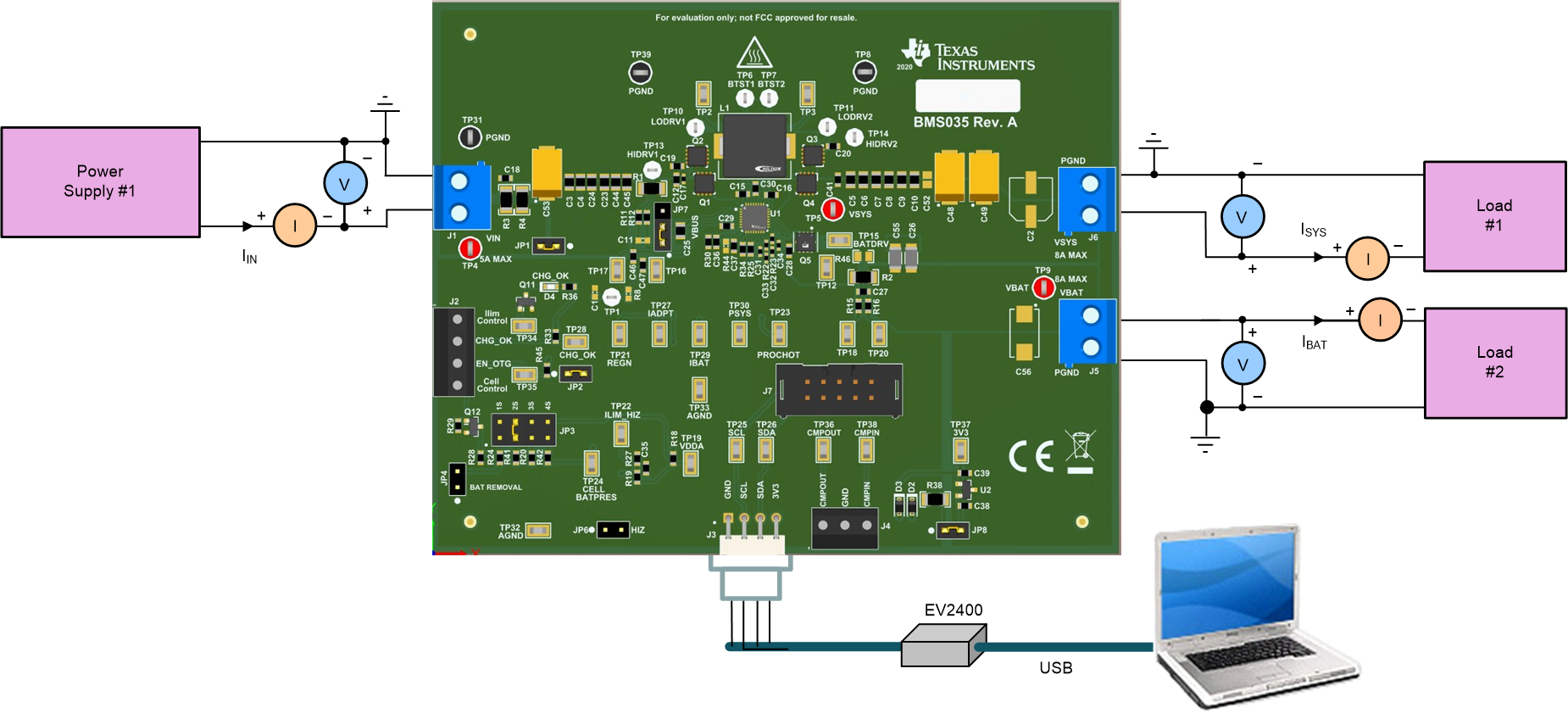SLUUC74 May 2021 BQ25720 , BQ25723
2.3 Equipment Setup
Use the following guidelines to set up the equipment:
- Set power supply #1 for 10-V DC, 5-A current limit and then turn off the supply.
- Connect the output of power supply #1 in series with a current meter to J1 (VIN and PGND).
- Connect a voltage meter across J1 (VIN) and J1 (PGND).
- Connect load #1 in series with a current
meter to J6 (VSYS and PGND).
Connect a voltage meter across J6 (VSYS and PGND).
Set 1 A at the constant current mode. Turn off load #1. - Connect Load #2 in series with a current
meter to J5 (VBAT and PGND).
Connect a voltage meter across J5 (VBAT and PGND).
Set 7 V at KEPCO load output. Turn off load #2.Note: Add a 47-µF capacitor on the BAT pin when testing without a real battery. - Connect J3 to the EV2400. Connect J3 to
the SMBus PORT 1 (BQ25720) or I2C PORT 2 (BQ25723) on the EV2400. Figure 2-1 shows the connections.
 The picture shows the SMBus version EVM connection. If using the BQ25723EVM, move the connector to the I2C port.Figure 2-1 EV2400 Connections
The picture shows the SMBus version EVM connection. If using the BQ25723EVM, move the connector to the I2C port.Figure 2-1 EV2400 Connections - Install jumpers
as indicated in Table 1-2.
After completing these steps, the test setup for BMS035 is as shown in Figure 2-2.
 Figure 2-2 Original Test
Setup for BMS035 (BQ2572x EVM)
Figure 2-2 Original Test
Setup for BMS035 (BQ2572x EVM) - Turn on the computer and power supply #1.
Open the bqStudio software.
- Select Charger and click the
Next button.

- For SMBus BQ25720, select “Charger_1_00_BQ25720.bqz” on the Select a Target Page. For I2C BQ25723, select “Charger_1_00_BQ25723.bqz” on the Select a Target Page.
- After selecting the target device, click the Read Register button and the interface in Figure 2-3 is presented.
- Select Charger and click the
Next button.
 Figure 2-3 Main Window of
the BQ2572x Evaluation Software
Figure 2-3 Main Window of
the BQ2572x Evaluation Software